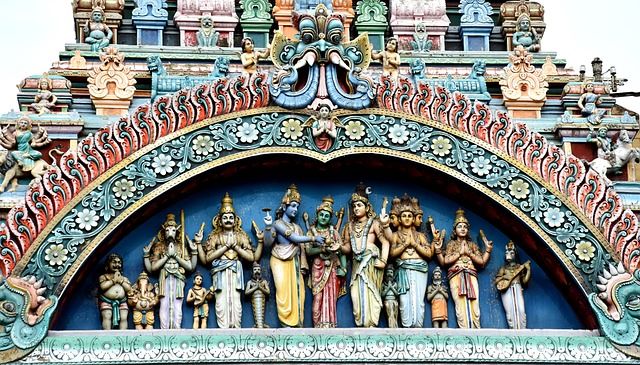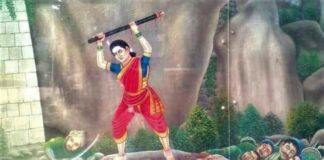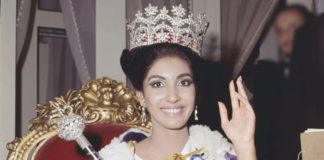The ancient Indian classical poet Kalidasa’s ‘Shakuntala’ is a masterpiece of monogamy relationship that puts selfless love in the spotlight. It highlights the depth of falling in love with a person and being stuck to them, come what may. Another celebrated Indian poet, the Nobel laureate, Rabindranath Tagore’s poems like ‘Unending Love’ and ‘My Song’ also showcase the intensity and magnanimity of love towards a single person. Who cannot fall for A.K Ramanujan’s ‘Love Poem for a Wife’, which depicts the commitment of people in love?
Indian poetry and literature are enriched with diverse poets who touch upon the themes of love, devotion to a committed relationship and the beauty of falling in love with a single person and growing old with them. Poets like Kabir Das, Meera Bai added the flavour of spirituality to the dessert of love. But what is this all about today? Well, straight to the point, I’m trying to get you on to the lines of understanding monogamy relationship.
Monogamy Relationship- A Promise of Commitment
The state of maintaining a single romantic partner at a given time and being committed in love with one person is called monogamy. It is a relationship structure where individuals refrain from getting into intimate relationships with others while they are in a relationship with one person. Sometimes, getting into a non-sexual or emotional relationship with others is considered to be allowed, but not a sexual or physical relationship. Monogamy has been one of the most practised forms of relationship structures across many cultures and societies.

Were the Early Men Monogamous?
The mating systems among early men were still a subject of research. It is understood that early humans practised both monogamous and non -monogamous relationships, considering the data from archaeological and anthropological reports about monogamy relationship. Initially, the societies were small and compact. The mating habits weren’t given a specific pattern with one person being in a relationship with multiple partners at a said time.
Women would have spent time bearing children and due to this, must have been staying away from activities like food sourcing and hunting for a long time in their lives. They thus chose their male partners who were capable enough to feed them and their infants. This indirectly meant that the responsibility of raising a child is not taken solely by their biological father. Anyone who the woman feels is capable of meeting her needs, becomes the caretaker. That’s how the polygamous relationships must have been during the early years of civilization.
Eventually, as the societies grew bigger, it must have become ambiguous and difficult for elders to raise children. There must also have been the development of a sense of responsibility and ownership towards one’s own children, making the biological parents stick to remain in a monogamy relationship with each other for the sake of providing to their children. Men and women stayed together and raised their children, giving them love and care, paving the foundations to monogamous relationships.
Also, the rise of epidemics and Sexually Transmitted Infections (STIs), that took away the lives of several humans, must have created a sense of fear in them about maintaining multiple sexual partners. This in turn could have become a strong factor for the wake of monogamous relationships among humans. Just like the evolution of life, the evolution of a system of mating could have been a phenomenon of centuries.
Was India Monogomous Since The Beginning?
The answer to this question cannot be a quick yes or no, considering the vast history of our nation. However, it’s clear from the pages of Indian history that polygamy has been a practice across various levels of the country’s society and cultures.

Many Indian rulers belonging to ancient dynasties like the Mauryas, Guptas, and Cholas practiced polygamy. The kings often had multiple partners and the central reason for this was to secure their realms by forging political alliances. Also, having multiple partners allows them to have multiple children, which in turn secures an heir to the kingdom, thereby stabilizing the power and the throne. Often, in royal societies, polygamy was seen as a symbol of prestige and status. Polygamy among royal families was characterized by a combination of traditional practices and a political desire to expand power and influence. That means, the more the number of wives, the greater is the wealth, magnitude of authority and power.
Scripts from Hindu mythology also depict instances of polygamy. As we take a look at the mythological figures like Lord Krishna, King Dasaratha and others, there is a clear reflection of multiple partners, for they are said to have several consorts and queens.
India was ruled by the Mughal emperors from the 16th to the 19th centuries. These rulers, Emperor Akbar for instance, followed polygamy. They had multiple queens including those from the Hindu Rajput kingdoms. These relationships were purely for political and strategic reasons. The Nizams of Hyderabad were prominent in the history of India for having numerous wives. Mir Osman Ali Khan, the seventh Nizam had around 50 wives.
Also, polygamous relationships were quite common in some tribal communities and regional groups. Polygamy comes as a part of their cultural beliefs and traditional practices.
While we look at the account of polygamous families throughout history, we get to notice the challenges and conflicts they underwent. For example, the rivalry between the wives of Emperor Akbar were mentioned in certain historical records. Also, disputes among the surviving family members of Tipu Sultan after his death over the succession and control of the kingdom raised eyebrows. It almost left a scar on his legacy. Similar issues sprouted with the Maratha confederacy too. In several reported instances, polygamy in certain tribal and regional communities of India led to conflicts related to inheritance, property and status of different wives and the rights of their children.
Indian History and Monogamy Relationship
It’s not fair to brand Indian society as being polygamous as a whole. Many famous personalities like kings, saints, and leaders have practiced monogamy and set an example to those who are grappling with the effects of polygamy. They showed why monogamous relationships are healthy, safe and loving. They remained committed to their ideology till the last grain and proved that there’s unlimited happiness and unconditional love in monogamity.
Siddhartha Gautama, also known as Gowthama Buddha practised monogamy relationship. He married Yashodhara and had a son with her. In his later years, he left his kingly comforts and reign to pursue enlightenment. Gauthama Buddha delivered several preachings to mankind that made human lives peaceful and happy. One among them is to live a life of honesty and contentment. The main feature of monogamy is all about this – being honest to your partner for a lifetime.
Many ancient philosophers like the Adi Shankaracharya practised lifestyles being detached from worldly attachments. They practised celibate and monastic lifestyles, far from mere commitments. In fact, they never married and got into a family way. Kabir Das, Meera Bai and other Indian saints from the medieval Bhakti movement practised monogamy, in a way different from the routine. They dedicated their lives to God and expressed their devotion to the almighty, especially towards a single deity. Their path of monogamy was through celibacy and detachment from the worldly lust.
Many Indian kings upheld certain religious and moral ethics and practised monogamy. To name a few, Chandragupta Maurya was married to Durdhara and their relationship is noted for their mutual affection and partnership. Likewise, King Samudragupta, renowned for his triumphant military campaigns and love for arts and culture, stuck to a monogamous relationship with his queen Dattadevi. Rajaraja Chola I, the great architectural genius, was devoted to his queen Lokamahadevi.
King Harsha and Shivaji Maharaj also were noted for their monogamous lifestyles. Sawai Jai Singh II, the founder of Jaipur and the king with a deep understanding of science, astronomy and urban planning, also practised monogamy. These kings extended certain values to the societies through their lifestyles.
Their commitment and loyalty to a single partner extrapolated to the commitment they had for their kingdom and subjects. Also, kings who practised monogamy relationship often were seen to have displayed respect towards women and their rights within marriages.
Their treatment of wives as equal partners and not as mere possessions symbolised the value they attributed to the woman community in their kingdoms. They were also seen to possess stability and unity within their families and in their kingdoms, which led to their contribution to coherence in the society. These kings also displayed self-discipline, ethical behaviour and moral principles and often motivated their subjects to follow similar values.
Leaders from Indian history like Mahatma Gandhi also practised monogamy. His marriage with Kasturba Gandhi was seen as something characterised by mutual understanding, respect and companionship. Modern Indian leaders like Jawaharlal Nehru and others also practised monogamy in their lives and set an example of how monogamy is the best form of living in the changing social and economic conditions.
The Evolution of Monogomous Behaviours
Though polygamy was practised in Indian history for innumerable reasons, with changing legal and societal norms, it became less prevalent. While a few theories suggest that several social and ecological factors played a key role in this shift from polygamy to monogamy relationship, considering the minimal documentation of varied historical events, it is difficult to give a clear picture of the transformation. As mentioned before, the need for personal parental care and cooperation in raising children, checking the spread of diseases and infections, and to make sure that there are enough resources for the increasing number of members of the family subsequently made humans inclined towards monogamous relationships.

Does Indian Law Enforce Monogamy Relationship?
After independence, India walked towards being a more democratic and modern society. On that note, there arose a need to update the laws around family and marriage. Thus, in the year 1955, the government of India passed the Hindu Marriage Act. According to this, polygamy was made illegal for Hindus. This is an official or a formal end to polygamy in a major part of Indian society. The introduction of this law was influenced by several factors as follows-
Social reform movements witnessed in the country in the 19th and early 20th centuries questioned the traditional practices and advocated for women’s rights, education and equality. The social reformers believed that monogamy is a way to secure women’s rights and to ensure their overall well-being within marriages. The advocates and activists argued that polygamy leads to inequality and mistreatment (among multiple wives) and creates turbulence in the economic and personal standing of women and their children.
They also put forth that monogamy is more equitable as it prevents the concentration of resources and authority in the hands of a few men who had multiple wives (as the main reason behind polygamous marriages was to acquire more wealth and prosperity that comes along with women).
In that way, monogamy relationship, they opined, would promote social justice. Also, in polygamous families, there is a greater chance of unequal distribution of resources like finances, housing and healthcare, among different spouses and children. This can further lead to unequal access to education and healthcare.
Thus, they mentioned that in monogamous marriages, property and inheritance are distributed between two partners, which promotes stable financial conditions. Several advocates of monogamy also argued that polygamy can lead to mental health issues like stress, anxiety and depression, which could further affect the physical health of individuals.
Another important factor that contributed to the introduction of the Hindu Marriage Act was the British rule in India. During the British rule, Indian societies and legal systems were greatly influenced by those of the British. As the British legal system emphasized on monogamous marriages, thoughts around introducing similar laws in India began to spring.

Is The Hindu Marriage Act Applicable to All?
Well, though the Indian constitution codified the Hindu Marriage Act that refrains Hindu men from marrying more than one woman, it is important to note that this law doesn’t apply to all religions. Being a democratic and secular state, India took into consideration, the personal laws of different religious communities too. These communities are allowed to practice polygamy owing to their personal laws that govern marriage and family matters based on their religious beliefs. These laws don’t form a part of the uniform civil code and are exclusive to specific religious groups. For instance, Muslim men in India are allowed to have utmost four wives at a time, as per the Islamic personal law framework.
On the other hand, Sikhs, Buddhists and Jains are governed by the Hindu Marriage Act, and thus are not allowed to practice polygamy. The Parsi Marriage and Divorce Act of 1936 doesn’t permit polygamy among Parsis. Also, the Indian Christian Marriage Act upholds monogamy.
The Bottom line
As we tried to understand monogamy and its evolution in the Indian context, we now know that relationships, either monogamous or polygamous, are greatly influenced by social, cultural, political, economic and personal factors. Monogamy, especially, is a mark of mutual exclusivity and emotional togetherness between two individuals. The strictness of a relationship in monogamy varies from person to person and from community to community. In some instances, it can strictly demand sexual and emotional exclusivity while in other instances, it could allow non-sexual relationships with others.
Often, human relationships are complex and varied. They differ from culture to culture. Today, monogamy relationship is practised everywhere in the urban and educated segments of the society. However, in some communities, even today, polygamy persists owing to their religious beliefs, cultural preferences and traditional practices. The end of polygamy in India and to reach where we are today has been a gradual phenomenon that took centuries to take shape. We are still left with a few miles to walk, to establish monogamy and relish its fruits.













